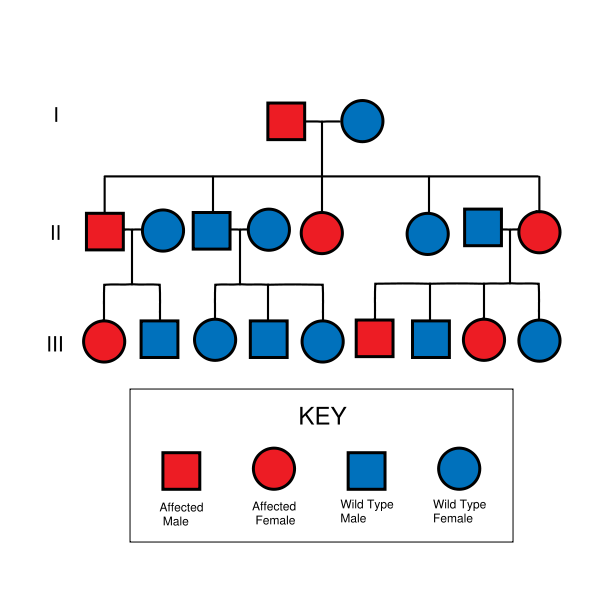Hereditary nonpolyposis colorectal cancer pathophysiology: Difference between revisions
No edit summary |
No edit summary |
||
| Line 1: | Line 1: | ||
__NOTOC__ | |||
{{Hereditary nonpolyposis colorectal cancer}} | {{Hereditary nonpolyposis colorectal cancer}} | ||
{{CMG}} | {{CMG}} | ||
| Line 4: | Line 5: | ||
==Overview== | ==Overview== | ||
== | ==Pathophysiology== | ||
HNPCC defects in [[DNA mismatch repair]] lead to [[microsatellite instability]], also known as MSI-H, which is a hallmark of HNPCC. Three major groups of MSI-H cancers can be recognized by histopathological criteria: | HNPCC defects in [[DNA mismatch repair]] lead to [[microsatellite instability]], also known as MSI-H, which is a hallmark of HNPCC. Three major groups of MSI-H cancers can be recognized by histopathological criteria: | ||
| Line 14: | Line 14: | ||
MSI is identifiable in [[cancer]] specimens in the [[pathology]] laboratory. <ref>http://www.annalsnyas.org/cgi/content/abstract/910/1/62</ref> | MSI is identifiable in [[cancer]] specimens in the [[pathology]] laboratory. <ref>http://www.annalsnyas.org/cgi/content/abstract/910/1/62</ref> | ||
== | ==Genetics== | ||
HNPCC is known to be associated with mutations in [[gene]]s involved in the [[DNA mismatch repair]] pathway | HNPCC is known to be associated with mutations in [[gene]]s involved in the [[DNA mismatch repair]] pathway | ||
{| class="wikitable" | {| class="wikitable" | ||
Revision as of 16:41, 18 September 2012
|
Hereditary Nonpolyposis Colorectal Cancer Microchapters |
|
Differentiating Hereditary Nonpolyposis Colorectal Cancer from other Diseases |
|---|
|
Diagnosis |
|
Treatment |
|
Case Studies |
|
Hereditary nonpolyposis colorectal cancer pathophysiology On the Web |
|
American Roentgen Ray Society Images of Hereditary nonpolyposis colorectal cancer pathophysiology |
|
FDA on Hereditary nonpolyposis colorectal cancer pathophysiology |
|
CDC on Hereditary nonpolyposis colorectal cancer pathophysiology |
|
Hereditary nonpolyposis colorectal cancer pathophysiology in the news |
|
Blogs on Hereditary nonpolyposis colorectal cancer pathophysiology |
|
Directions to Hospitals Treating Hereditary nonpolyposis colorectal cancer |
|
Risk calculators and risk factors for Hereditary nonpolyposis colorectal cancer pathophysiology |
Editor-In-Chief: C. Michael Gibson, M.S., M.D. [1]
Overview
Pathophysiology
HNPCC defects in DNA mismatch repair lead to microsatellite instability, also known as MSI-H, which is a hallmark of HNPCC. Three major groups of MSI-H cancers can be recognized by histopathological criteria:
- (1) right-sided poorly differentiated cancers
- (2) right-sided mucinous cancers
- (3) adenocarcinomas in any location showing any measurable level of intraepithelial lymphocyte (TIL)
MSI is identifiable in cancer specimens in the pathology laboratory. [1]
Genetics
HNPCC is known to be associated with mutations in genes involved in the DNA mismatch repair pathway
| Genes implicated in HNPCC | Frequency of mutations in HNPCC families | First publication
. |
|---|---|---|
| MLH1 | Together with MSH2, 90% of mutations in HNPCC families. The human mutL homologue hMLH1 is located at chromosome 3p21 | Papadopoulos et al., 1994[2] |
| MSH2 | Together with MLH1, 90% of mutations in HNPCC families.hMSH2 is gene is located at chromosome 2p21. | Fishel et al., 1993[3] |
| MSH6 | 7-10% of mutations in HNPCC families | |
| PMS | <5% of mutations in HNPCC families | |
| PMS2 | <5% of mutations in HNPCC families |
Up to 39% of families with mutations in an HNPCC gene do not meet the Amsterdam criteria. Therefore, families found to have a deleterious mutation in an HNPCC gene should be considered to have HNPCC regardless of the extent of the family history. This also means that the Amsterdam criteria fail to identify many patients at risk for Lynch syndrome. Improving the criteria for screening is an active area of research, as detailed in the Screening Strategies section of this article.

HNPCC is inherited in an autosomal dominant manner. Most people with HNPCC inherit the condition from a parent. However, due to incomplete penetrance, variable age of cancer diagnosis, cancer risk reduction, or early death, not all patients with an HNPCC gene mutation have a parent who had cancer. Some patients develop HNPCC de-novo in a new generation, without inheriting the gene. These patients are often only identified after developing an early-life colon cancer. Parents with HNPCC have a 50% chance to pass the gene on to each child.
References
- ↑ http://www.annalsnyas.org/cgi/content/abstract/910/1/62
- ↑ Papadopoulos N, Nicolaides N, Wei Y, Ruben S, Carter K, Rosen C, Haseltine W, Fleischmann R, Fraser C, Adams M (1994). "Mutation of a mutL homolog in hereditary colon cancer". Science. 263 (5153): 1625–9. PMID 8128251.
- ↑ Fishel R, Lescoe M, Rao M, Copeland N, Jenkins N, Garber J, Kane M, Kolodner R (1993). "The human mutator gene homolog MSH2 and its association with hereditary nonpolyposis colon cancer". Cell. 75 (5): 1027–38. PMID 8252616.